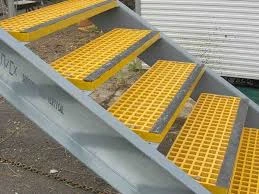
-
 Afrikaans
Afrikaans -
 Albanian
Albanian -
 Amharic
Amharic -
 Arabic
Arabic -
 Armenian
Armenian -
 Azerbaijani
Azerbaijani -
 Basque
Basque -
 Belarusian
Belarusian -
 Bengali
Bengali -
 Bosnian
Bosnian -
 Bulgarian
Bulgarian -
 Catalan
Catalan -
 Cebuano
Cebuano -
 China
China -
 China (Taiwan)
China (Taiwan) -
 Corsican
Corsican -
 Croatian
Croatian -
 Czech
Czech -
 Danish
Danish -
 Dutch
Dutch -
 English
English -
 Esperanto
Esperanto -
 Estonian
Estonian -
 Finnish
Finnish -
 French
French -
 Frisian
Frisian -
 Galician
Galician -
 Georgian
Georgian -
 German
German -
 Greek
Greek -
 Gujarati
Gujarati -
 Haitian Creole
Haitian Creole -
 hausa
hausa -
 hawaiian
hawaiian -
 Hebrew
Hebrew -
 Hindi
Hindi -
 Miao
Miao -
 Hungarian
Hungarian -
 Icelandic
Icelandic -
 igbo
igbo -
 Indonesian
Indonesian -
 irish
irish -
 Italian
Italian -
 Japanese
Japanese -
 Javanese
Javanese -
 Kannada
Kannada -
 kazakh
kazakh -
 Khmer
Khmer -
 Rwandese
Rwandese -
 Korean
Korean -
 Kurdish
Kurdish -
 Kyrgyz
Kyrgyz -
 Lao
Lao -
 Latin
Latin -
 Latvian
Latvian -
 Lithuanian
Lithuanian -
 Luxembourgish
Luxembourgish -
 Macedonian
Macedonian -
 Malgashi
Malgashi -
 Malay
Malay -
 Malayalam
Malayalam -
 Maltese
Maltese -
 Maori
Maori -
 Marathi
Marathi -
 Mongolian
Mongolian -
 Myanmar
Myanmar -
 Nepali
Nepali -
 Norwegian
Norwegian -
 Norwegian
Norwegian -
 Occitan
Occitan -
 Pashto
Pashto -
 Persian
Persian -
 Polish
Polish -
 Portuguese
Portuguese -
 Punjabi
Punjabi -
 Romanian
Romanian -
 Russian
Russian -
 Samoan
Samoan -
 Scottish Gaelic
Scottish Gaelic -
 Serbian
Serbian -
 Sesotho
Sesotho -
 Shona
Shona -
 Sindhi
Sindhi -
 Sinhala
Sinhala -
 Slovak
Slovak -
 Slovenian
Slovenian -
 Somali
Somali -
 Spanish
Spanish -
 Sundanese
Sundanese -
 Swahili
Swahili -
 Swedish
Swedish -
 Tagalog
Tagalog -
 Tajik
Tajik -
 Tamil
Tamil -
 Tatar
Tatar -
 Telugu
Telugu -
 Thai
Thai -
 Turkish
Turkish -
 Turkmen
Turkmen -
 Ukrainian
Ukrainian -
 Urdu
Urdu -
 Uighur
Uighur -
 Uzbek
Uzbek -
 Vietnamese
Vietnamese -
 Welsh
Welsh -
 Bantu
Bantu -
 Yiddish
Yiddish -
 Yoruba
Yoruba -
 Zulu
Zulu
Innovative FRP Chimney Solutions for Enhanced Durability and Efficiency in Industrial Applications
Exploring FRP Chimneys The Future of Industrial Emission Solutions
In recent years, environmental concerns have taken center stage across industries, driving companies to innovate and adapt their operations. One area of focus has been the design and materials used in industrial chimneys, which are crucial for the safe and effective dispersal of exhaust gases. Among the various materials available, Fiberglass Reinforced Plastic (FRP) has emerged as a leading solution, offering numerous advantages over traditional materials.
FRP chimneys are composed of a composite material made by combining a polymer matrix with reinforcing fibers, typically glass. This innovative construction provides enhanced strength, durability, and resistance to corrosive substances, making FRP an ideal choice for environments that typically challenge conventional materials such as concrete, steel, or brick.
Advantages of FRP Chimneys
1. Corrosion Resistance One of the most significant benefits of FRP chimneys is their resistance to corrosion. Industrial emissions can often contain harmful gases and chemicals that degrade traditional materials over time. FRP's non-corrosive nature ensures longevity and reduces maintenance costs, making it a cost-effective choice in the long run.
2. Lightweight Design FRP is significantly lighter than traditional chimney materials, which simplifies transportation and installation. This reduced weight allows for easier handling and less stress on supporting structures, potentially lowering overall construction costs and time.
3. High Strength-to-Weight Ratio Despite its lightweight nature, FRP possesses a high strength-to-weight ratio. This means it can withstand extreme conditions and loads without the bulk of heavier materials. Consequently, FRP chimneys can be designed taller and narrower, optimizing site space and aesthetics.
4. Thermal Insulation The thermal properties of FRP also make it suitable for various applications. Fiberglass has excellent insulating capabilities, reducing heat loss and improving the efficiency of exhaust systems. This feature is particularly important in industries where emission temperatures are high.
frp chimney

5. Customizable Factory Production FRP chimneys can be manufactured to specific dimensions and requirements in controlled factory settings. This precision leads to better final products that meet stringent industry standards and tailor-fit for particular applications.
6. Reduction of Environmental Impact Given the growing emphasis on sustainability, adopting FRP chimneys can aid in reducing the overall environmental footprint of industrial operations. Their longevity and durability mean that fewer resources are consumed in repairs and replacements over time.
Applications of FRP Chimneys
FRP chimneys have found applications across various industries, including power generation, petrochemical, wastewater treatment, and food processing. In power plants, for instance, FRP chimneys effectively handle high-temperature emissions while resisting corrosive flue gases, ensuring compliance with environmental regulations. Similarly, in the petrochemical industry, where exposure to harsh chemicals is constant, FRP provides a robust solution that maintains operational integrity.
In wastewater treatment facilities, FRP chimneys offer reliable performance with minimal maintenance, significantly enhancing operational efficiency. Their adaptability and customizability make them suitable for a wide range of industrial setups, offering an effective solution to the growing demand for sustainable practices across sectors.
Conclusion
As industries face increasing pressure to rein in emissions and adhere to stringent environmental regulations, FRP chimneys stand out as a superior alternative to traditional chimney materials. By combining strength, lightweight design, corrosion resistance, and better thermal insulation, they not only meet but often exceed the demands of modern industrial applications. The future of environmental safety and efficiency might very well hinge on these advanced materials, ushering in a new era in industrial emission solutions. As adoption continues to rise, firms that embrace these innovations will be better positioned to navigate the challenges of compliance and sustainability in an ever-evolving landscape.









